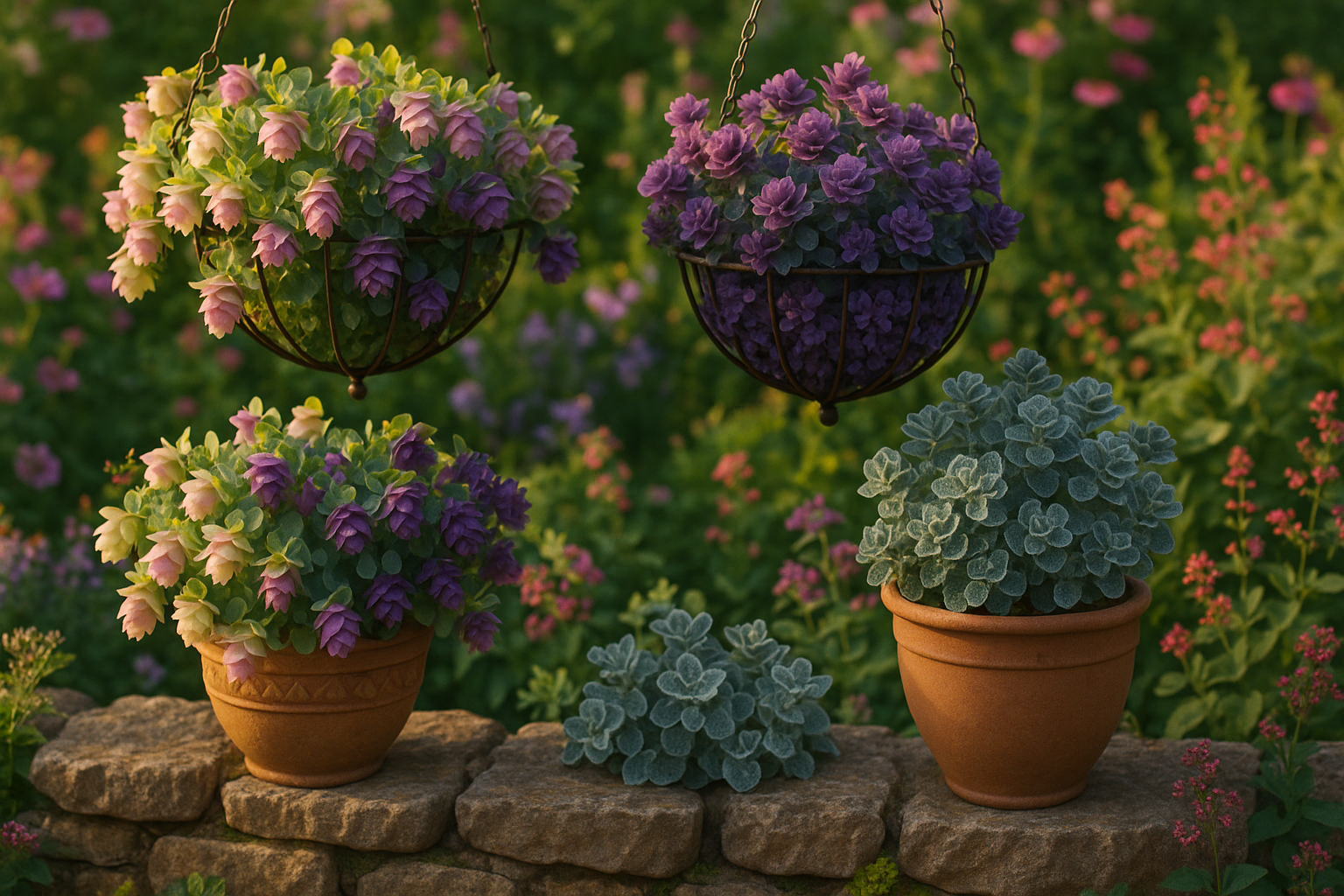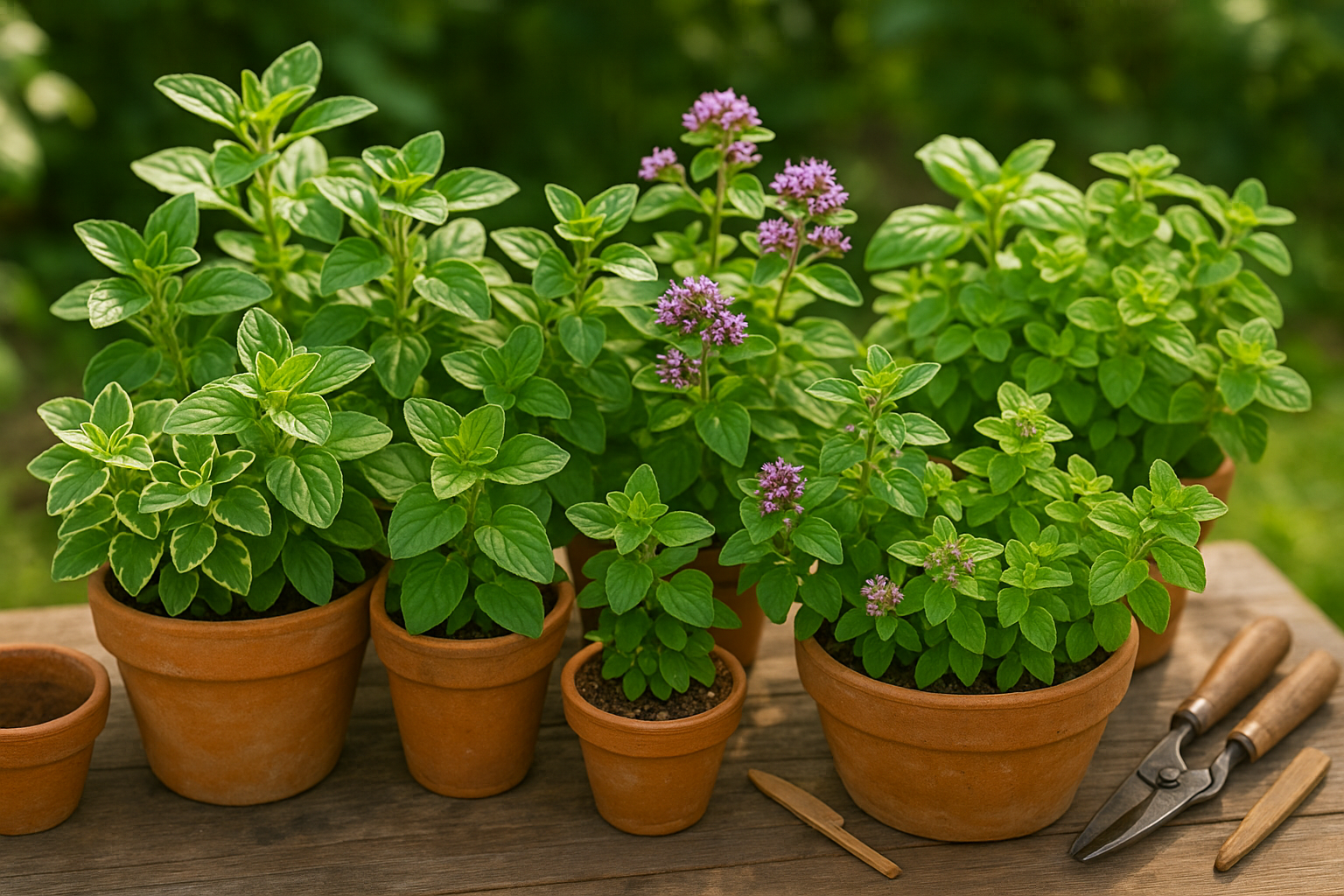Introduction to Oregano Varieties
If you’re searching for the best oregano varieties to grow at home, you’re tapping into one of the most rewarding herbs for any kitchen or garden. Oregano is a versatile staple, famous for its robust, aromatic leaves that add depth to Italian, Greek, and Mexican dishes. What many home gardeners don’t realize is that there’s a whole world of oregano varieties, each with its own unique flavor profile, fragrance, and growth habit.
From the spicy pungency of Greek oregano to the subtle sweetness of Italian, and the gorgeous blooms of ornamental cultivars, your choice can truly shape your culinary adventures and garden style.
Selecting the right oregano is more than just picking a seed packet; it’s about matching your tastes, cooking habits, and even your climate to the ideal variety. Do you want intense flavor for sauces and pizzas, or a milder leaf for salads? Is your garden sunny and dry, or are you growing indoors on a windowsill?
In this post, you’ll discover the key differences among the best oregano varieties, with tips for choosing, planting, and caring for each type—so you can enjoy thriving plants and unbeatable homegrown flavor all season long.
Top Edible Oregano Varieties for Home Gardens

If you love growing herbs for homemade meals, oregano is a must-have—and there’s more than one type to try in your garden. Greek oregano (Origanum vulgare subsp. hirtum) is a favorite among chefs for its bold, peppery flavor that gives classic Mediterranean dishes their iconic taste. It thrives in warm, sunny spots and requires little more than occasional watering, making it an easy pick for beginners.
Common oregano (Origanum vulgare) offers a milder, slightly sweeter flavor, perfect for salads, soups, and everyday cooking. It’s equally hardy and can even be grown in containers on a sunny windowsill.
Italian oregano, a cross between oregano and marjoram, boasts a delicate, almost floral note—think subtle sweetness with less of the bite—which pairs beautifully with pasta sauces, pizza, and roasted vegetables.
For those who enjoy a bit of heat, Hot & Spicy oregano lives up to its name, packing a fiery punch that livens up salsas, chili, and spicy rubs. It’s a fast-growing variety that spreads quickly and is best kept in check with regular trimming.
When selecting a variety, think about the dishes you cook most often:
- Greek oregano for robust tomato sauces
- Italian oregano for gently flavored stews
- Hot & Spicy oregano for Tex-Mex favorites
All these varieties are perennials in warm climates and can be harvested by pinching off stems as needed, which encourages fuller plants. Plus, their drought tolerance and resistance to common pests make them a rewarding, low-maintenance choice for gardeners at any skill level. Just remember to give them plenty of sun and well-drained soil, and you’ll always have fresh, aromatic leaves ready to boost your kitchen creations.
Unique and Ornamental Oregano Varieties

Ornamental oregano varieties bring a unique twist to herb gardening, combining subtle fragrance with exceptional visual appeal. Unlike standard culinary oregano, these varieties stand out with intricate forms and vibrant colors.
‘Kent Beauty’ displays drooping, pink-and-cream hop-like bracts tipped with tiny purple flowers, creating a soft, cascading effect ideal for hanging baskets or container edges. ‘Kirigami’ boasts compact, mounding foliage accented by paper-like, rose-purple bracts, making it perfect for sunny borders or as an eye-catching filler among perennials. Then there’s the airy and whimsical ‘Dittany of Crete,’ prized for its silvery felted leaves and delicate clusters of lavender-pink blooms—an excellent choice for rock gardens or dry slopes where its Mediterranean origins shine.
Beyond their beauty, these ornamental oreganos attract pollinators like bees and butterflies, supporting a healthy, biodiverse garden. For the best performance, plant them in free-draining soil and position them in full sun; they thrive in USDA zones 5-9, echoing their native regions’ warmth and dryness.
Try mixing these oreganos along sunny pathways or in mixed herb beds, where their unusual textures and forms provide contrast to more common green foliage. They also excel in low-maintenance gardens, needing little water once established, and are relatively pest-resistant.
Whether spilling from a stone retaining wall or cascading from a decorative pot on your patio, ornamental oreganos offer gardeners a playful, sophisticated twist on tradition while supporting local pollinators and providing year-round interest.
Cultivation and Care Tips for Healthy Oregano
Oregano thrives best in well-draining, moderately fertile soil with a neutral to slightly alkaline pH, making it a forgiving herb for most gardeners. Whether you’re planting in the ground or using containers, ensure the spot gets at least six hours of direct sunlight daily—oregano loves warmth and bright light. Raised beds or pots with drainage holes are excellent options, especially if your native soil is heavy or clay-based.
When watering, less is more: allow the soil to dry out between each watering, as oregano is drought-tolerant and prone to root rot if kept soggy. Novice gardeners often find oregano easygoing because it doesn’t demand constant attention, but even experienced growers should be mindful not to overwater.
For robust growth, pinch back stems early to encourage bushier plants, and prune regularly to prevent legginess—removing older, woody stems will stimulate new shoots. Aphids and spider mites sometimes visit, but a simple rinse with water or introducing ladybugs can keep these pests under control without the need for harsh chemicals.
If you’re growing oregano for the kitchen, opt for Greek or Italian varieties, which are bred for flavor—a regular harvest will boost leaf production, making your plant even lusher. Ornamental types like golden or variegated oregano are gorgeous in borders and rock gardens but often have less flavor and may need slightly more shade in hot climates to prevent leaf scorch.
Both culinary and ornamental oreganos benefit from a light layer of mulch to suppress weeds and retain moisture, but avoid piling it against the stems. With these tips, gardeners of any experience level can enjoy thriving oregano plants that bring both beauty and flavor to any space.
How to Harvest and Use Different Oregano Types
Harvest oregano early in the morning when its essential oils are most concentrated. Snip the stems just as the plant begins to bud, but before it flowers, for the best flavor. Use clean, sharp scissors and cut back up to two-thirds of the growth. This not only provides you with aromatic leaves but also encourages bushier regrowth.
If you’re working with Greek or Italian oregano, pick only the tender top leaves, as they are less bitter than mature growth.
Using Fresh Oregano
For fresh use, add chopped oregano late in the cooking process to retain its bold flavor—think pizza, salad dressings, or finishing a tomato sauce.
Using Dried Oregano
Dried oregano is robust enough for long-cooking dishes like stews and soups. To dry oregano, simply bundle harvested stems and hang them upside down in a dry, airy spot. Once crisp, crumble the leaves and store them in an airtight jar away from light.
Using Ornamental Oregano
If you grow ornamental varieties like ‘Kent Beauty’ or ‘Hopley’s Purple’, consider using the dried flower heads in fragrant sachets, homemade wreaths, or as table decor for a natural touch at home.
Preserving Excess Harvest
- Make oregano-infused oil.
- Cube chopped leaves in ice trays with olive oil for easy drop-in flavor boosters.
Always inspect leaves before storing, discarding any with signs of mold or pests. Properly dried oregano retains its flavor for up to a year—perfect for enjoying your garden’s bounty long after the growing season ends.
Deciding Which Oregano Varieties Are Right For You
Choosing the right oregano varieties for your garden starts with considering your flavor preferences and how you plan to use the herb. If you love cooking Mediterranean dishes, Greek oregano (Origanum vulgare subsp. hirtum) is a classic choice with robust, peppery notes, while Italian oregano (a hybrid of oregano and marjoram) offers a milder, slightly sweeter taste that’s perfect for sauces and pizzas.
For ornamental gardens, golden oregano provides eye-catching yellow-green foliage and thrives in borders or containers. Be sure to check your local climate before buying seeds or plants; Greek and Italian oregano prefer warm, sunny spots, but Syrian or Turkish oregano can handle drier, harsher conditions.
If you’re working with limited space, all oreganos grow well in pots on balconies or patios—just ensure good drainage and regular pruning to encourage bushier plants.
When deciding, match your main goal to the best variety:
- Culinary plant lovers should focus on taste.
- Those looking for attractive landscaping can mix culinary and decorative types.
Don’t hesitate to try several varieties in your garden; each brings unique flavors and textures to the table. Experimenting can lead to both better meals and a more vibrant garden space.
Conclusion and Next Steps
Growing oregano at home brings the satisfaction of harvesting fresh, aromatic herbs right from your garden or windowsill, ensuring every meal is bursting with unbeatable flavor and nutritional value. Beyond the classic Greek and Italian varieties, there’s a whole world of oregano types to explore—each with its own unique taste profile.
Don’t hesitate to experiment with different kinds to find the one that best suits your favorite dishes! Have you tried growing various oregano varieties, or do you have any creative uses for your homegrown harvest? Share your experiences or questions in the comments below—your tips might inspire another reader.
For those eager to dive deeper, check out trusted gardening websites and YouTube tutorials to master oregano care and propagation. Your oregano journey doesn’t stop here—there’s always more to learn, taste, and enjoy, turning a simple herb into a rewarding hobby.
